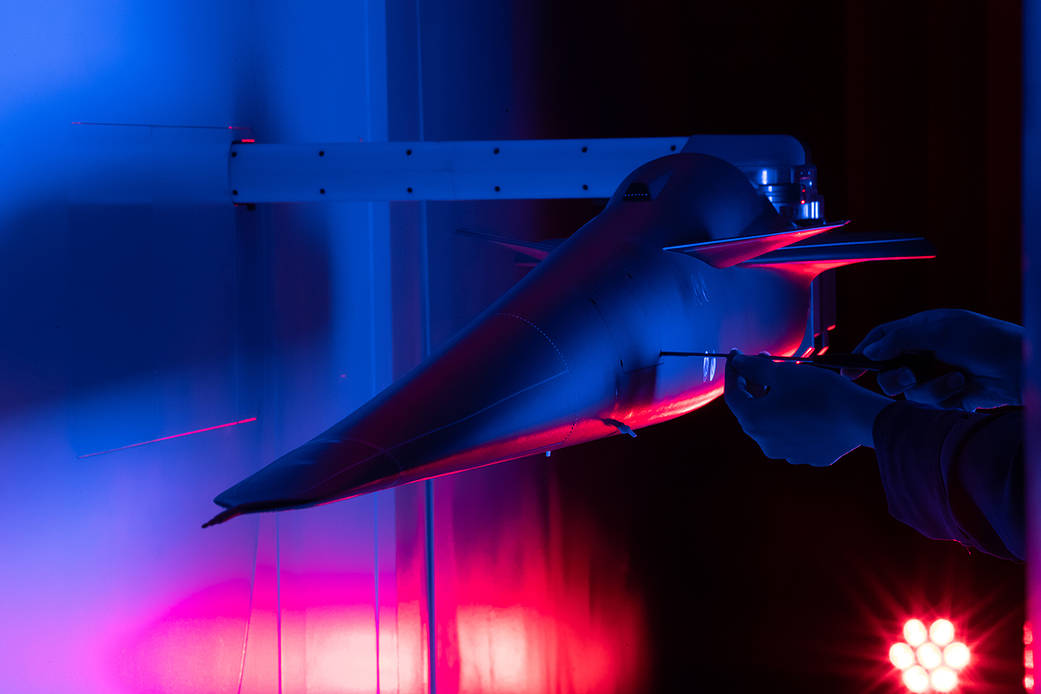为下一代飞行做准备
Before NASA’s quiet supersonic X-59 aircraft takes to the skies, plenty of testing happens to ensure a safe first flight. One part of this safety check is to analyze data collected for the X-59’s flight control system through low-speed wind tunnel tests.
The X-59 is central to NASA’s Quesst mission to expand supersonic flight and provide regulators with data to help change existing national and international aviation rules that ban commercial supersonic flight over land. The aircraft is designed to produce a gentle thump instead of a sonic boom.
Recently, Lockheed Martin’s Skunk Works facility in Palmdale, California, completed low-speed wind tunnel tests of a scale model of the X-59’s forebody. The tests provided measurements of how wind flows around the aircraft nose and confirmed computer predictions made using computational fluid dynamics, or CFD, software tools. The data will be fed into the aircraft flight control system and will allow the pilot to know the altitude, speed and angle that the aircraft is flying at in the sky.
In this image, a technician works on the X-59 model during testing in the low-speed wind tunnel, in February 2022.
Learn more
Low-Speed Wind Tunnel Test Provides Important Data
Image Credit: Lockheed Martin
在NASA安静的超音速X-59飞机升空之前,需要进行大量测试以确保首次飞行的安全。这些安全检查的一部分是分析通过低速风洞测试为X-59的飞行控制系统收集的数据。
X-59是NASA Quesst任务的核心,该任务旨在扩大超音速飞行,并为监管机构提供数据,以帮助改变现有的禁止商业超音速飞行的国家和国际航空规则。该飞机的设计目的是产生轻微的撞击声,而不是产生音爆。
最近,洛克希德·马丁公司位于加利福尼亚州帕姆代尔的臭鼬工厂完成了X-59前身比例模型的低速风洞测试。这些测试提供了飞机机头周围气流的测量结果,并证实了使用计算流体动力学(CFD)软件工具做出的计算机预测。数据将被输入飞机飞行控制系统,使飞行员能够知道飞机在空中飞行的高度、速度和角度。
在这张照片中,2022年2月,一名技术人员在低速风洞中测试X-59模型。
了解更多信息
图片来源:洛克希德·马丁

